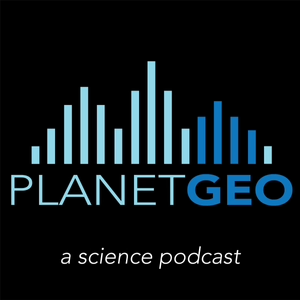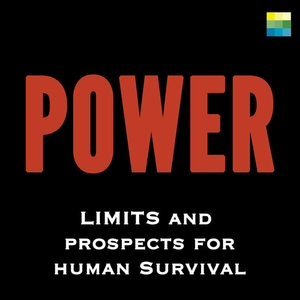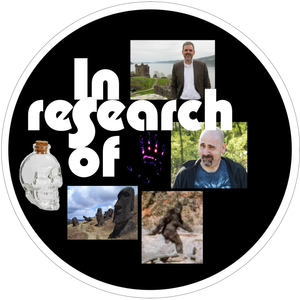
Grand Canyon Hiking Recommendations (GeoShort)
04/08/21 • 12 min
Learn all the basics of geology in our new conversational textbook - campGEO!
Available here: geo.campcourses.com
Are you planning a trip to the Grand Canyon soon? Are you interested in seeing some cool geoscience features? Join us today as we discuss a few great hikes to check out while visiting the Grand Canyon National Park in Arizona, USA.
We discuss hiking trails such as the South Kaibab Trail down to the aptly-named Ooh Ahh Point (so beautiful!), and end up at Skeleton Point for a full view of the Canyon in all its glory! Alternatively, you could take the Bright Angel trail, a somewhat nicer hike because of all the restrooms and water stations every 1.5 miles, stop at the amazingly lush Indian Garden, and eventually make your way out to the Plateau Point for a dramatic view directly down to the Colorado River.
The South Rim of the Grand Canyon has an amazing amount of views and hiking that are easily accessible to everyone, even if you don't want to hike very far. For instance, you could start by visiting the small cairns that contain actual samples of the 1.7 billion-year-old Vishnu Schist, or by walking the Trail of Time, where for every large step you take down into the Canyon is equal to going back in time One Million Years in the rock record!
As always, don't feed the wildlife, and downhill hikers always yields to uphill hikers , and everyone yields to mule trains!
If you want to hear an overview of the geology of the Grand Canyon, check out our previous episode covering the full history with detailed descriptions of the major geoscience features of the park. The Grand Canyon has over 1.9 billion years of geology on display, and it is all very visible in a stunning landscape!
——————————————————
Instagram: @planetgeocast
Twitter: @planetgeocast
Facebook: @planetgeocast
Youtube: https://www.youtube.com/channel/UCJ_A82nOMu0nIvZto6zMPqg
Email: [email protected]
Website: https://planetgeocast.buzzsprout.com/
Download the CampGeo app now at this link.
On the app you can get tons of free content, exclusive images, and access to our Geology of National Parks series.
You can also learn the basics of geology at the college level in our FREE CampGeo content series - get learning now!Like, Subscribe, and leave us a Rating!
——————————————————
Instagram: @planetgeocast
Twitter: @planetgeocast
Facebook: @planetgeocast
Support us: https://planetgeocast.com/support-us
Email: [email protected]
Website: https://planetgeocast.com/
Learn all the basics of geology in our new conversational textbook - campGEO!
Available here: geo.campcourses.com
Are you planning a trip to the Grand Canyon soon? Are you interested in seeing some cool geoscience features? Join us today as we discuss a few great hikes to check out while visiting the Grand Canyon National Park in Arizona, USA.
We discuss hiking trails such as the South Kaibab Trail down to the aptly-named Ooh Ahh Point (so beautiful!), and end up at Skeleton Point for a full view of the Canyon in all its glory! Alternatively, you could take the Bright Angel trail, a somewhat nicer hike because of all the restrooms and water stations every 1.5 miles, stop at the amazingly lush Indian Garden, and eventually make your way out to the Plateau Point for a dramatic view directly down to the Colorado River.
The South Rim of the Grand Canyon has an amazing amount of views and hiking that are easily accessible to everyone, even if you don't want to hike very far. For instance, you could start by visiting the small cairns that contain actual samples of the 1.7 billion-year-old Vishnu Schist, or by walking the Trail of Time, where for every large step you take down into the Canyon is equal to going back in time One Million Years in the rock record!
As always, don't feed the wildlife, and downhill hikers always yields to uphill hikers , and everyone yields to mule trains!
If you want to hear an overview of the geology of the Grand Canyon, check out our previous episode covering the full history with detailed descriptions of the major geoscience features of the park. The Grand Canyon has over 1.9 billion years of geology on display, and it is all very visible in a stunning landscape!
——————————————————
Instagram: @planetgeocast
Twitter: @planetgeocast
Facebook: @planetgeocast
Youtube: https://www.youtube.com/channel/UCJ_A82nOMu0nIvZto6zMPqg
Email: [email protected]
Website: https://planetgeocast.buzzsprout.com/
Download the CampGeo app now at this link.
On the app you can get tons of free content, exclusive images, and access to our Geology of National Parks series.
You can also learn the basics of geology at the college level in our FREE CampGeo content series - get learning now!Like, Subscribe, and leave us a Rating!
——————————————————
Instagram: @planetgeocast
Twitter: @planetgeocast
Facebook: @planetgeocast
Support us: https://planetgeocast.com/support-us
Email: [email protected]
Website: https://planetgeocast.com/
Previous Episode

The New Climate War: Dr. Michael Mann, Distinguished Professor and Author
There is a new climate war afoot. And, there is a book about it! Professor Michael Mann, Distinguished Professor at The Pennsylvania State University, has a long history of studying and discussion climate change. His new book, titled The New Climate War, is out now!
In this episode we interview Mike about his journey in academia, what the new climate war is all about, and what he sees as the best path towards solutions. We discuss how last climate war has ended, what we all can do to fix the problem, and how Dr. Mann sees the future working out.
Send us your questions, thoughts, or suggestions!
Dr. Michael E. Mann received his undergraduate degrees in Physics and Applied Math from the University of California at Berkeley, an M.S. degree in Physics from Yale University, and a Ph.D. in Geology & Geophysics from Yale University.
Dr. Mann was a Lead Author on the Observed Climate Variability and Change chapter of the Intergovernmental Panel on Climate Change (IPCC) Third Scientific Assessment Report in 2001 and was organizing committee chair for the National Academy of Sciences Frontiers of Science in 2003. He has received a number of honors and awards including NOAA's outstanding publication award in 2002 and selection by Scientific American as one of the fifty leading visionaries in science and technology in 2002. He contributed, with other IPCC authors, to the award of the 2007 Nobel Peace Prize. He was awarded the Hans Oeschger Medal of the European Geosciences Union in 2012 and was awarded the National Conservation Achievement Award for science by the National Wildlife Federation in 2013. He made Bloomberg News' list of fifty most influential people in 2013. In 2014, he was named Highly Cited Researcher by the Institute for Scientific Information (ISI) and received the Friend of the Planet Award from the National Center for Science Education. He received the Stephen H. Schneider Award for Outstanding Climate Science Communication from Climate One in 2017, the Award for Public Engagement with Science from the American Association for the Advancement of Science in 2018 and the Climate Communication Prize from the American Geophysical Union in 2018. In 2019 he received the Tyler Prize for Environmental Achievement and in 2020 he received the World Sustainability Award of the MDPI Sustainability Foundation. He was elected to the U.S. National Academy of Sciences in 2020. He is a Fellow of the American Geophysical Union, the American Meteorological Society, the Geological Society of America, the American Association for the Advancement of Science, and the Committee for Skeptical Inquiry. He is also a co-founder of the award-winning science website RealClimate.org.
——————————————————
Instagram: @planetgeocast
Twitter: @planetgeocast
Facebook: @planetgeocast
Youtube: https://www.youtube.com/channel/UCJ_A82nOMu0nIvZto6zMPqg
Email: plane
Download the CampGeo app now at this link.
On the app you can get tons of free content, exclusive images, and access to our Geology of National Parks series.
You can also learn the basics of geology at the college level in our FREE CampGeo content series - get learning now!Like, Subscribe, and leave us a Rating!
——————————————————
Instagram: @planetgeocast
Twitter: @planetgeocast
Facebook: @planetgeocast
Support us: https://planetgeocast.com/support-us
Email: [email protected]
Website: https://planetgeocast.com/
Next Episode

Ancient Nukes: 1.9 Billion-Year-Old Nuclear Reactors
Did you know that nuclear fission reactions are natural? Uranium fission drives many types of nuclear power plants as well as nuclear weapons. However, these types of reactions occurred on Earth naturally, just billions of years ago. Today, we discuss the Oklo natural fission reactors in Gabon, Africa.
These natural reactors are not only amazingly cool, but they have a really interesting discovery story and they can teach us a lot about the overlap between nuclear physics and geoscience, how uranium deposits form, and what Earth's ancient atmosphere looked like!
These are important for several reasons:
- Geology and nuclear physics have a very intimate relationship.
- Basically all radiometric dating we use on Earth was developed on the back of research on Uranium nuclear physics and research into nuclear weapons/reactors.
- Geoscience and national security are intimately related:
- Nuclear forensics, or using isotope analyses to look for people enriching uranium, use the same techniques and instruments as geochronology
- Many PhD geoscientists go to work in national security labs/jobs
- These natural nuclear reactors help us explain Earth’s history and where Uranium deposits occur.
Another cool feature of these ancient nuclear reactors is that they may have looked much like geysers in Yellowstone National Park! They were moderated by natural groundwater, and they cycled on and off in ~30 minute cycles.
All told, these natural nuclear reactors are one of the single coolest geoscience factoid we know of!
——————————————————
Instagram: @planetgeocast
Twitter: @planetgeocast
Facebook: @planetgeocast
Youtube: https://www.youtube.com/channel/UCJ_A82nOMu0nIvZto6zMPqg
Email: [email protected]
Website: https://planetgeocast.buzzsprout.com/
Download the CampGeo app now at this link.
On the app you can get tons of free content, exclusive images, and access to our Geology of National Parks series.
You can also learn the basics of geology at the college level in our FREE CampGeo content series - get learning now!Like, Subscribe, and leave us a Rating!
——————————————————
Instagram: @planetgeocast
Twitter: @planetgeocast
Facebook: @planetgeocast
Support us: https://planetgeocast.com/support-us
Email: [email protected]
Website: https://planetgeocast.com/
If you like this episode you’ll love
Episode Comments
Generate a badge
Get a badge for your website that links back to this episode
<a href="https://goodpods.com/podcasts/planetgeo-the-geology-podcast-220960/grand-canyon-hiking-recommendations-geoshort-25292501"> <img src="https://storage.googleapis.com/goodpods-images-bucket/badges/generic-badge-1.svg" alt="listen to grand canyon hiking recommendations (geoshort) on goodpods" style="width: 225px" /> </a>
Copy




